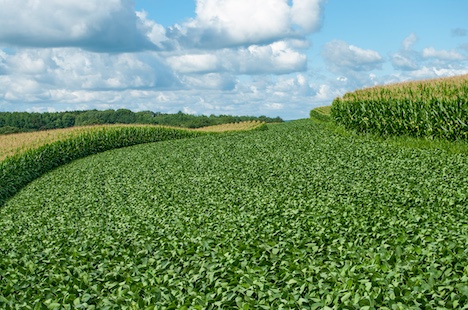Planting 101: Plant Right Population at Right Depth
Apr 09, 2024

Two key aspects of planting need attention before you hit the fields: plant population and planting depth.
“Some corn hybrids like to be planted at higher populations to do their best,” said Sam Johnson, Federated ag sales rep from the Albertville location. Some hybrids, when planted at lower populations, will adjust their ear size. Planting population can vary from hybrid to hybrid, though a range of 32K to 34K seeds per acre is a good starting point – “but don’t assume that,” he said. Your Federated Agronomist can help you determine planting populations for the hybrids you’ve selected.
For soybeans, a planting population of 140K per acre is good – unless you are dealing with white mold or less fertile soils. Fields with white mold need lower planting populations as a starting point for mitigating the disease. “Growers who don’t get the yields on tough soils may drop planting populations to save money on seed,” said Johnson.
Planting depth should also be tailored to the hybrid being planted – especially on corn. And again, “every hybrid has different recommendations for planting depth and soil fertility,” said Johnson.
Planting depth should be at 1-1/2 to 2 inches for corn, and 1 to 1-1/2 inches for soybeans.
Johnson cautioned, Once you are out in the field, “check the planting depth first thing. Don’t assume that because [the planter] worked fine last year that it’s just fine this year.”
“Check your planters now, and make sure they are ready for spring,” Johnson said. And talk to your Federated Agronomist with any questions.
“Some corn hybrids like to be planted at higher populations to do their best,” said Sam Johnson, Federated ag sales rep from the Albertville location. Some hybrids, when planted at lower populations, will adjust their ear size. Planting population can vary from hybrid to hybrid, though a range of 32K to 34K seeds per acre is a good starting point – “but don’t assume that,” he said. Your Federated Agronomist can help you determine planting populations for the hybrids you’ve selected.
For soybeans, a planting population of 140K per acre is good – unless you are dealing with white mold or less fertile soils. Fields with white mold need lower planting populations as a starting point for mitigating the disease. “Growers who don’t get the yields on tough soils may drop planting populations to save money on seed,” said Johnson.
Planting depth should also be tailored to the hybrid being planted – especially on corn. And again, “every hybrid has different recommendations for planting depth and soil fertility,” said Johnson.
Planting depth should be at 1-1/2 to 2 inches for corn, and 1 to 1-1/2 inches for soybeans.
Johnson cautioned, Once you are out in the field, “check the planting depth first thing. Don’t assume that because [the planter] worked fine last year that it’s just fine this year.”
“Check your planters now, and make sure they are ready for spring,” Johnson said. And talk to your Federated Agronomist with any questions.